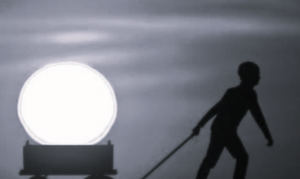How to Wash and Dry Your Hair to Avoid Hair Loss and Baldness.

How to Wash and Dry Your Hair to Avoid Hair Loss and Baldness.
Before entering the shower or beginning to wash your hair give it a good brushing, and massage the scalp as well.
These steps will loosen the dirt and scalp flakes, activate the oil glands, and encourage circulation.
It is important to pre-rinse for at least one full minute before applying shampoo.
This begins the removal of loosened debris from the scalp and facilitates better distribution of a smaller amount of shampoo.
Read more: Meditate, Don’t Medicate; Does meditation apps work?
Using too much shampoo can leave the hair dull because the more used, the more difficult it becomes to completely remove when rinsing.
Avoid using extremely hot water.
This can increase temporary hair loss by softening the scalp and making it easier to pull hairs from their roots.
To apply shampoo,
Pour the minimum amount necessary onto the palm of your hand, rub your hands together, and smooth the shampoo evenly over your hair.
Do not pour shampoo directly on your hair as this saturates one spot to excess.
Massage the shampoo into the scalp with the tips of the fingers (not the fingernails, which can irritate the scalp), spreading the lather and gently working the whole scalp area.
Then rinse with warm water, and continue rinsing longer than you think is necessary.
Also Read: Is Your Building Making You Sick; Flame Retardants
The ideal final rinsing should be with water moving progressively from cool to cold.
Cold water will stimulate circulation and shrink the outer layer of the hair, making it smoother, shinier, and more manageable.
It also makes the hairs stiffer, and stronger and locks them more firmly into their roots.
Some people need to wash their hair every day, some only once a week.
Most fall in between these two extremes.
How often one should shampoo depends on three factors;
- The first factor is the amount of oil your scalp naturally secretes.
Signs of excessive scalp oil requiring more frequent shampooing include dull and limp hair, itchy scalp, and greasy or oily-looking hair that clings to the scalp.
- The second factor is your environment.
If you live in a city with high levels of air pollution, then you will need to shampoo more frequently than someone living in a place with cleaner air.
- Finally, the season of the year is also a factor.
During the heat of summer your head will perspire more than in cooler weather, and so requires more frequent washing.
In cold, dry winter air your natural oil production may reduce to a point where shampooing is more seldom required.
Also Read: WHEN GOOD STRESS TURNS BAD
One washing should be sufficient for those who shampoo every day and assume that no unusual amounts of dirt and debris have been picked up.
If those who shampoo less frequently choose to lather up twice, it is recommended that they use a very mild shampoo.
Buy one based on advice from a professional, either at a salon or a natural foods store.
Labels can be misleading.
A good shampoo will allow for deep cleaning without stripping the hair of its natural oils.
When hair is “squeaky clean”, it is probably over-cleaned.
This is unnecessary and damaging to hair.
After the hair has been washed and thoroughly rinsed, apply the conditioner.
Apply like that for the shampoo: pour a little into one palm, then rub the hands together and smooth it over the hair.
However, remember that a conditioner is for the hair and not the scalp, so you need not work it into the scalp as you would with shampoo.
Conditioners can be used as often as you shampoo, but don’t use too much; you can over-condition your hair.
Also Read: Understanding and Managing Grief
Excess conditionings can weigh the hair down and reduce, instead of enhance, luster and body.
One with very fine hair may find that frequent use, or that certain brands may cause their hair to have a flat and limp look.
Those with oily hair may find certain brands to exacerbate the problem.
The answer, as with shampoos, is trial and error.
If your hair is not damaged you may opt to use a conditioner only once or twice a week.
In any case, most conditioners will have done their job within 30 seconds of application, so it is not necessary to leave it on any longer than that.
Also Read: Natural Treatment for Baldness or Hair Loss.
After conditioning, squeeze or shake out excess water, and pat your hair dry using the towel as a blotter.
Don’t rub your hair or you may rough up the cuticle layer surface, or break fragile hair shafts.
A hairstyle for which air drying will suffice is ideal; blow dryers can damage hair if improperly used.
If you must use a blow dryer, do so after you have towel-dried the hair from wet to damp.
Use a dryer with power less than 1000 watts, and set it at the lowest heat level.
Stop as soon as the hair is dry (or even still slightly damp).
Damage is done by over-drying.
A wide nozzle dryer is preferable, as it diffuses the heat more and is easier on the hair.
Keep the dryer at least six inches from the hair and keep it moving, directing the air over and through the hair.
The nozzle should not be directed at the scalp and hair roots.
Hair that is wet or is being blow-dried should be combed with a wide-toothed, smooth-edged comb with blunt tips.
Also Read: Developing Sensitive Communication Skill or Ability
Hair swells in contact with water and becomes more fragile when wet.
At this point, the hair is so elastic that a brush may easily stretch and snap the hair shaft.
Work out tangles by combing gently, starting from the ends and working toward the scalp.
Join Enlighten Knowledge WhatsApp platform.
Or
Join Enlighten Knowledge Telegram platform.








